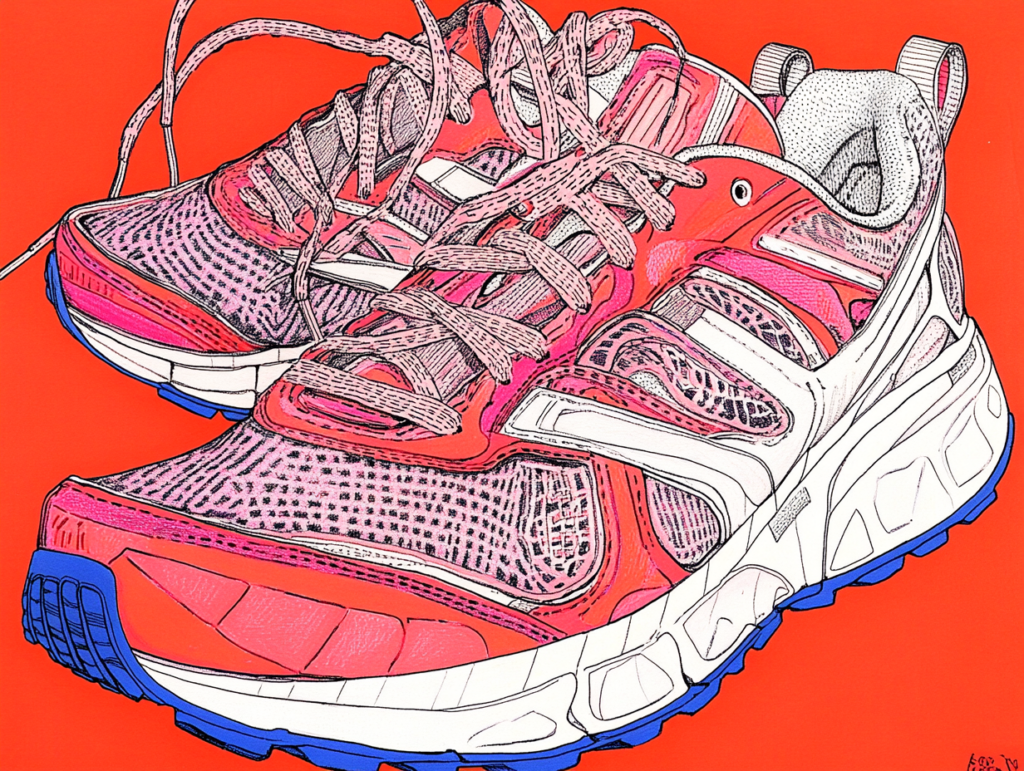Are Walking and Running Shoes the Same? Unraveling the Footwear Enigma
In the realm of footwear, one question persistently stands out: Are walking and running shoes interchangeable? At first glance, they might seem like distant relatives bound by their sole purpose of getting us from point A to point B in our walking routine. However, delving into their design differences reveals a number of distinctions; let’s explore them here.
Design and Purpose: Functionality Rules
Cushioning
Running shoes resemble a well-cushioned safety net, designed with thicker soles to brave the demanding impact of an active jog. Their soles witness and absorb the drama of high-impact forces, liberating your joints from potential strain. In contrast, walking shoes advocate for moderation. They cushion only enough to support the fluid heel-to-toe rhythm that walking demands.
Heel Flare and Height
The heels of running shoes — often elevated and flared — act as a stabilizing force for the kaleidoscope of foot strikes a runner might experience. Walkers, however, enjoy the harmony of a lower heel without the dramatics of a flare, promoting a serene stride.
Flexibility
Running shoes, designed with strategic flex grooves, echo the complex dance of natural foot movement during a run. They balance stability with flexibility, particularly in the midfoot. Walking shoes, friendlier and more pliable, provide a gentle embrace to the forefoot, fostering a natural foot roll.

Arch Support
Here lies another schism: Running shoes boast robust arch support akin to a firm handshake, essential for reducing fatigue during an energetic run. Walking shoes deliver a milder embrace, sufficient but less critical for their purpose.
Weight
A paradox emerges in their weight: Running shoes are feather-light to alleviate fatigue, propelling efficiency. By contrast, walking shoes, though slightly heavier, prioritize breathable comfort over marathon pace.
Sole Shape
Perhaps unassumingly, the sole’s shape holds secrets. Running shoes curve in a swift declaration of forward momentum, while walking shoes lay flatter, encouraging the rhythmic heel-to-toe procession.
Durability
Running shoes adopt the guise of warriors, their materials reinforced to withstand high-impact skirmishes. Walking shoes, crafted more delicately, mirror their low-impact journey, yet they remain staunch in support.
Usage Guidelines
Embarking on a run in walking shoes can be likened to entering a ballroom on roller skates—ill-advised and courting discomfort. Conversely, strolling in running shoes presents no faux pas, offering excessive cushioning that walkers may find delightful.
Proper Fitting and Maintenance
Just as a well-fitted suit enhances confidence, a properly-fitted shoe elevates your performance. Prioritize width, toe space, and pliability at the foot’s ball—a seamless fit eliminates any breaking-in period. Replace your trusty shoes every 300 to 500 miles, or every six to twelve months, to maintain their vitality.
So now, are walking and running shoes the same? They do share a common lineage, yet their paths diverge to serve distinct purposes—know thy shoe for better comfort on your next walking (or running!) adventure.